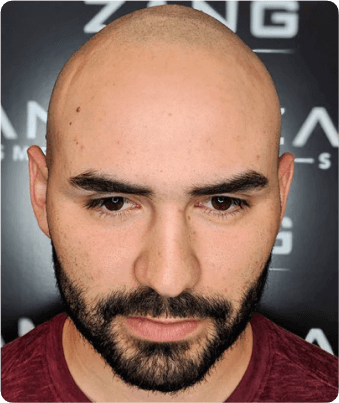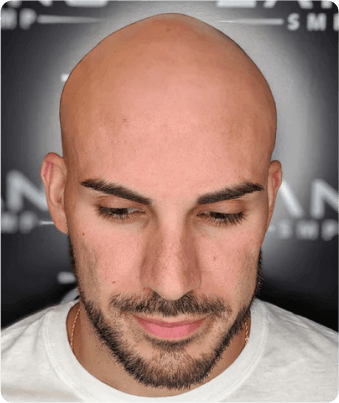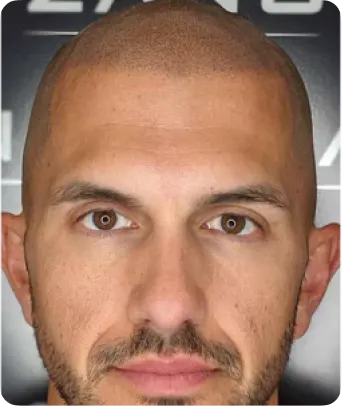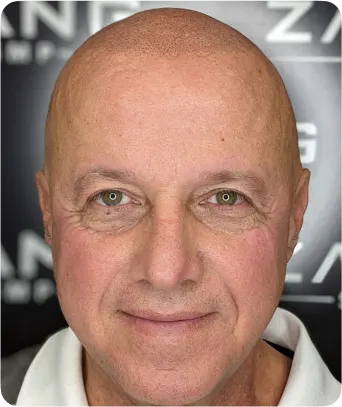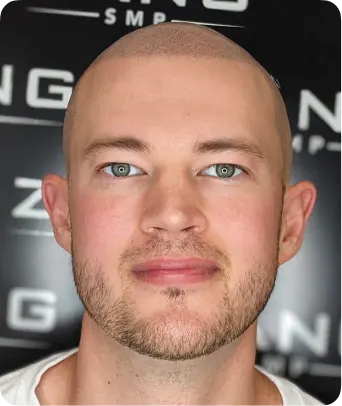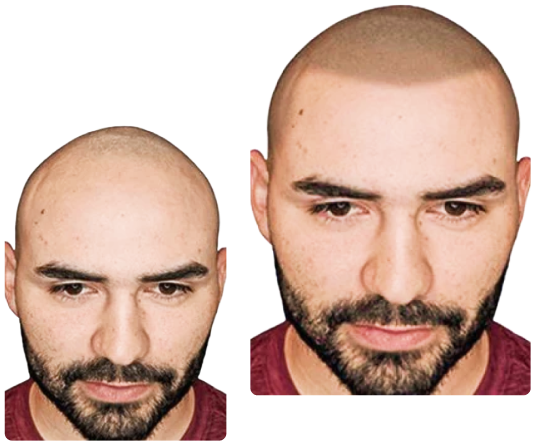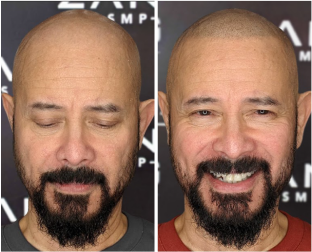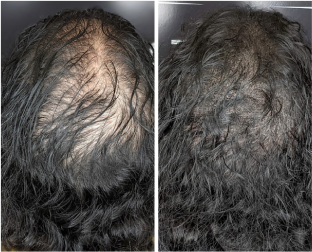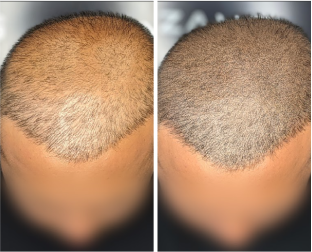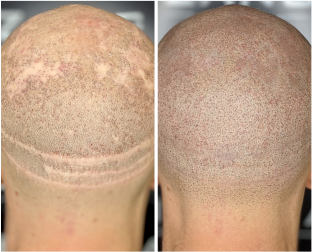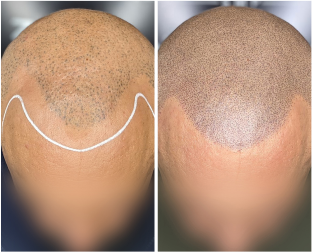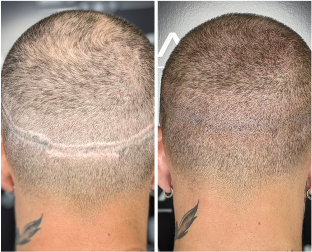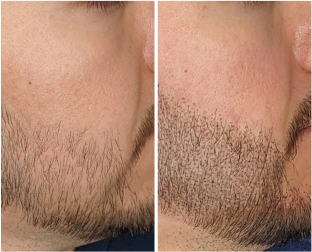How is Male Pattern Baldness Diagnosed and How Does it Influence Hair Loss?
To diagnose male pattern baldness, the specific pattern of hair loss affecting the hairline and crown is observed. Genetics and hormones play crucial roles in this and other hair conditions.
Stages of Male Pattern Baldness
To evaluate hair loss severity, the Hamilton-Norwood scale is used. Stage 1 is the least severe, and stage 7 indicates complete baldness on the top of the head. Patients in Norwood stages 1 to 3 typically have a mild to moderate receding hairline.
Norwood stages 4 to 5 involve severe hair loss at the front and marked thinning in the crown area. Stages 6 to 7 reflect near-total or total baldness on the top of the scalp.
Some rare variations of male pattern baldness include diffuse thinning of the entire scalp without affecting the hairline or hair loss confined to the crown area with no hairline recession.
Treatment For Male Pattern Hair Loss: Scalp Micropigmentation
Scalp Micropigmentation (SMP) is a non-invasive procedure designed to treat male-pattern baldness. It uses a particular tattooing technique on the scalp to create the appearance of hair follicles. SMP can provide a full head of hair for individuals, regardless of the extent of their hair loss.
Unlike hair transplantation, which is limited by the available donor hair grafts, SMP can stimulate hair growth and provide any level of hair density immediately, with no downtime required.
Zang SMP in Orange County uses plant-based, organic pigments applied to the scalp. These pigments replicate the appearance of hair follicles, resulting in a notable transformation. Instead of a bald head, SMP provides a buzzed hairstyle.
SMP for men avoids the need for surgery or a painful hair transplant. This option lets you achieve the look you want. If you’re dealing with a bald head you didn’t choose, we can assist. SMP gives you the hair to enhance your appearance.
SMP generally involves two to three sessions. For male-pattern hair loss, the first two treatments are scheduled a week apart. If a third treatment is necessary, it will be arranged 1 to 3 months later.

